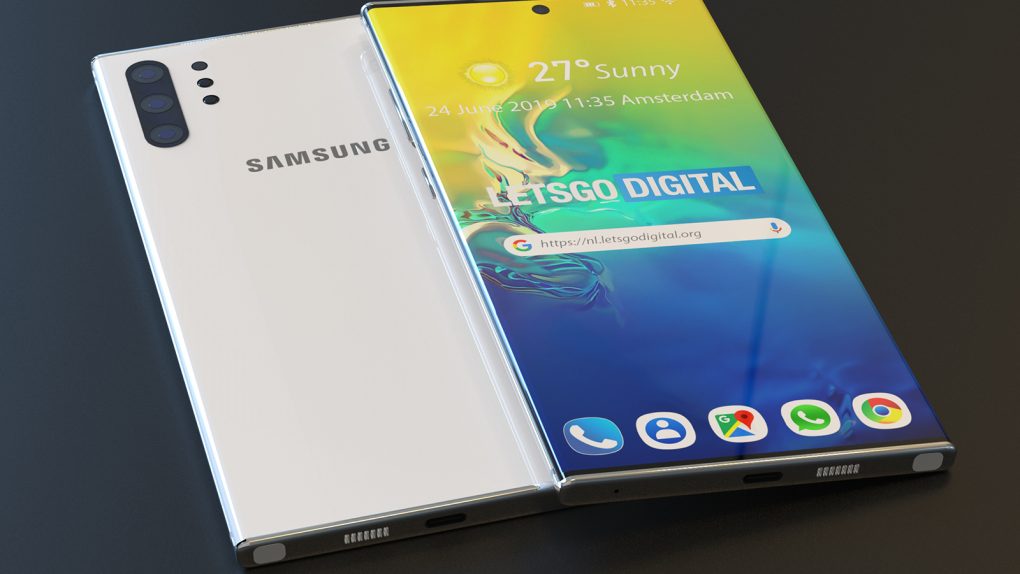Samsung will unveil the Galaxy Note 10 later this week, a phone that will come in two sizes and will feature Samsung’s latest multi-lens camera system. There’s a triple-lens shooter on the small Galaxy Note 10, while the Note 10+ gets an additional Time-of-Flight (ToF) sensor that captures depth data. Does that mean the Note 10 has a chance of becoming the best camera phone of the year?
The Note 10 is going to be followed by Apple’s iPhone 11 flagships, which will deliver triple-cam systems of their own. Google, meanwhile, has confirmed the Pixel 4 will have a two-lens camera system on the back, which should be backed up by new software-based photo technology. The Huawei Mate 30 Pro is also supposed to launch in October, just like the Pixel 4, but Huawei’s phone will have three cameras on the back and will feature better sensors than ever.
Well-known Samsung insider already believes the Mate 30 Pro will offer superior photography features when compared to the Note 10 series, and that’s because the Huawei phone will pack larger camera sensors.
There seems to be a lot of people who don't know how big the gap is. I'll draw a picture to tell you that, in fact, Note10 has no chance of beating Mate30 Pro in terms of camera hardware. pic.twitter.com/f8W2kSTLqk
— Ice universe (@UniverseIce) August 4, 2019
According to the image above, two of the Mate 30 Pro’s three cameras will be 40-megapixel 1/1.7 inch and 1/1.55 inch pixel sensors. The Galaxy Note 10, meanwhile, will feature a 12-megapixel 1/2.55 inch main sensor. The bigger the sensor the better the image quality, and Ice Universe offered an additional comparison table that shows Huawei has been increasing the sensor side steadily, making bigger advancements than Samsung.
How does Huawei's camera surpass Samsung? This picture tells you the answer. pic.twitter.com/NOKf3EEhDh
— Ice universe (@UniverseIce) August 4, 2019
However, we can’t overlook another important aspect that impacts photography quality, and that’s the pixel size. The Galaxy Note 10’s 1/2.55 inch sensor matches the iPhone XS, Pixel 3, and Galaxy S10, and these phones have pixel sizes of 1.4μm. The bigger the pixel size the more light a sensor collects, which results in better photo quality — especially in low-light conditions. And low-light photography performance is where everyone is competing for attention right now.
Getting back to one of those 40-megapixels cameras rumored to equip the Mate 30 Pro, we’ll note that its predecessor also featured a 40-megapixel camera with 1/1.7 inch sensors, which puts the pixel size at 1μm. The rumored 40-megapixels 1/1.55 inch sensor would therefore have bigger pixels as well.
But wait, isn’t the Note 10’s 1.4μm sensor going to be much better? Well, yes and no. Huawei’s Mate and Pro phones also use a technology called pixel-binning that allows data from four pixels to be combined into a single pixel so that the size of the pixel increases. When this technique is used, the actual photo resolution is divided by a factor of four as well, so we’d be looking at 10-megapixel photos on the Mate 30 Pro.
While Ice Universe seems convinced that the Mate 30 Pro will deliver better photos than the Note 10, we still have to wait and see how these phones behave in the real world. It’s not just about the number of cameras, megapixel count, or sensor/pixel size. Software and algorithms also play a massive role in smartphone photography nowadays — just look at what Google has done with the Pixel 3.







